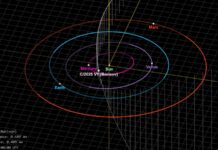Scientists at the Max Born Institute (MBI) have achieved a significant breakthrough in laser technology, fully characterizing extremely short (few-femtosecond) light pulses tunable across the vacuum ultraviolet (VUV) spectrum. This advancement opens up new possibilities for studying the dynamics of electrons within materials with unprecedented temporal precision and promises to revolutionize fields ranging from materials science to chemical physics.
The Challenge: Measuring Ultrafast VUV Pulses
Generating and measuring light pulses in the VUV region has long been a major challenge for scientists. Most materials exhibit electronic resonances in the deep- and vacuum-UV ranges, meaning that they strongly absorb light at these wavelengths. This absorption, combined with the Kramers-Kronig relation, leads to high material dispersion, making it exceedingly difficult to handle and accurately measure these fleeting pulses.
A Novel Technique: Resonant Dispersive Wave (RDW) Emission
The development of this capability builds upon the work of John C. Travers at Heriot-Watt University, UK. Travers pioneered a technique utilizing resonant dispersive wave (RDW) emission following soliton self-compression in waveguides. This process allows for the generation of very short (µJ-level) tunable UV pulses, spanning a wide range of wavelengths down to 110 nm.
Crucially, the availability of high-quality hollow waveguides, developed through the stretching of flexible capillaries, was essential for this technique to be successful. This innovation, jointly created by Travers and Peter Simon at the Institut für Nanophotonik Göttingen e.V., Germany, paved the way for further advancements.
Characterizing the Unmeasurable: Electron FROG
Despite previous progress, the shortest wavelengths of the VUV (100–200 nm) remained largely unexplored due to the extreme absorption and dispersion inherent in materials at these frequencies. Now, scientists at the MBI have successfully extended the RDW technique’s usability to this elusive VUV spectral range.
Their key innovation is a novel characterization technique called electron FROG, a sophisticated variation on frequency-resolved optical gating (FROG). This technique utilizes the two-photon ionization of noble gases to provide a unique nonlinearity. By precisely measuring the kinetic energy spectrum of the resulting photoelectrons, scientists can decode the shape and duration of the ultrashort VUV pulses.
How Electron FROG Works:
- Two pulses illuminate a noble gas target.
- The pulses ionize the gas, generating photoelectrons.
- The kinetic energy spectrum of these photoelectrons is recorded as a function of the time delay between the two pulses.
- A specialized phase-retrieval algorithm then reconstructs the pulse shape from the resulting spectrogram.
A Unique Advantage: Atomic Fingerprints
Electron FROG offers a significant advantage over standard techniques: the measured spectrograms reveal not only the pulse shape but also incorporate the “fingerprint” of the atomic structure of the target gas. This subtle influence required the development of a new phase retrieval code based on a differential evolution algorithm.
The accuracy of the measurements was rigorously validated through comparisons with ab initio quantum mechanical (TDSE) calculations. The results show that the RDW-generated VUV pulses have an impressively short duration of 2–3 fs, aligning with previous simulations.
Probing Molecular Dynamics with Unprecedented Detail
Beyond characterization, the electron FROG apparatus was utilized for pump-probe measurements on small organic molecules, such as ethylene. These measurements, performed with unparalleled temporal resolution, provide new insights into the earliest stages of relaxation dynamics following photo-excitation. Currently, researchers are analyzing the data and comparing it with sophisticated molecular dynamical simulations to fully understand the underlying processes.
This breakthrough in VUV pulse characterization unlocks a new era for probing valence electron dynamics and promises to deepen our understanding of materials at a fundamental level.
The ability to precisely measure and control these ultrafast VUV pulses will undoubtedly spur further innovation in various scientific disciplines, allowing for unprecedented investigations of molecular and material behavior.


























